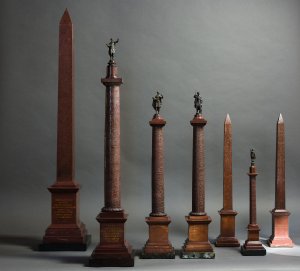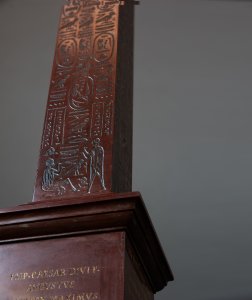Flaminian Obelisk, Rome
rosso antico marble
30-1/2″ h., c. 1830
inquire
Late 18th and 19th century Roman architectural mementos are largely datable by the materials
from which they are fashioned. The earliest models were carved in cork, later examples in ancient,
imported, colored marbles, and eventually, in domestically produced alabaster. Thus, the group of
reductions offered here were made near in time to each other.

Perhaps the most impressive object here is an outsize reduction of the Flaminian Obelisk. Note the extensive Latin inscriptions to the base, as well as accurate hieroglyphics extending over the monument’s shaft. The smaller models, however, are no less effective souvenirs.

It shouldn’t be forgotten that there are more ancient Egyptian obelisks in Rome than in Egypt. For the Emperors and, later, Popes who saw to the import and, later, positioning of these monoliths, those antique obelisks acted, like those pictured here, as souvenirs, albeit at a larger scale.

